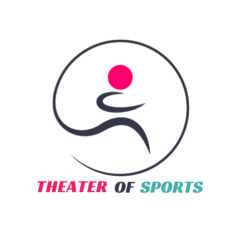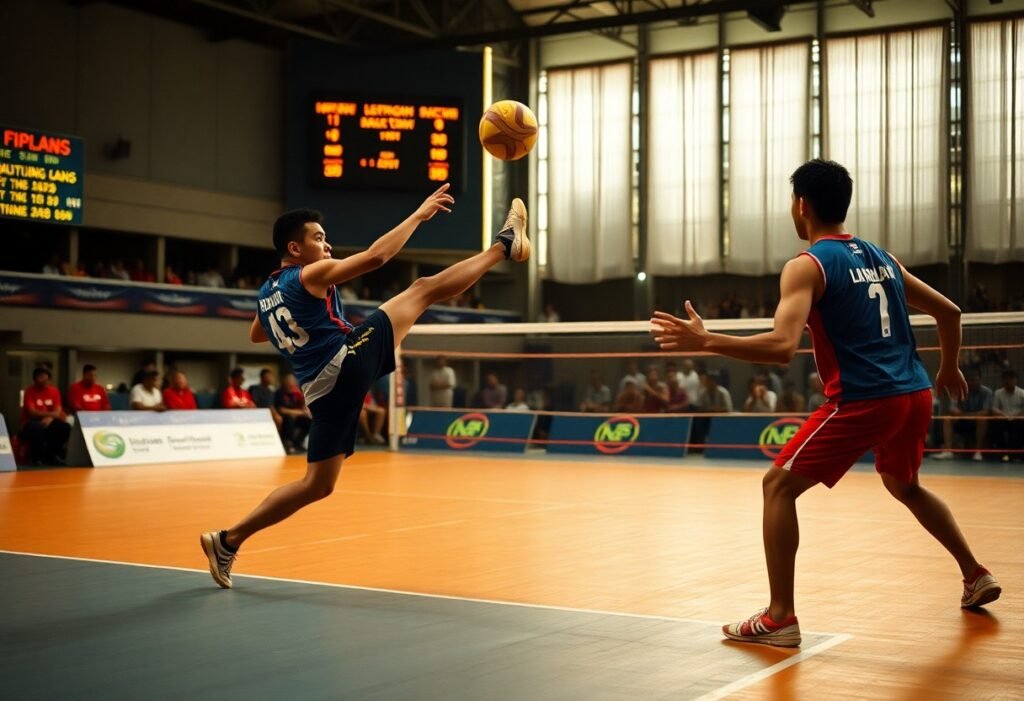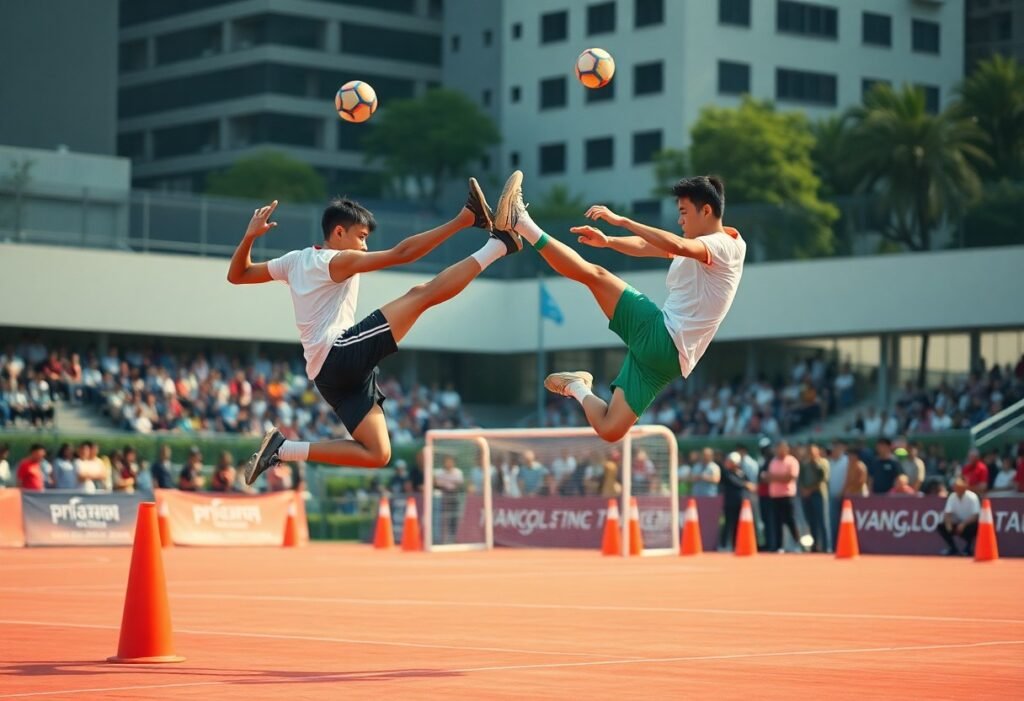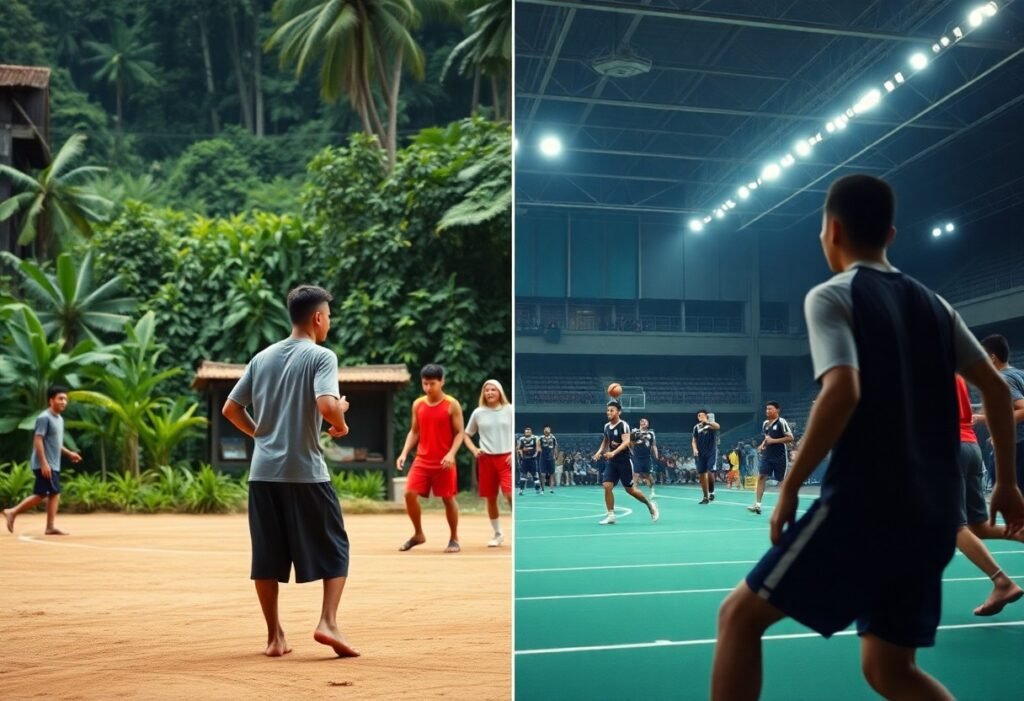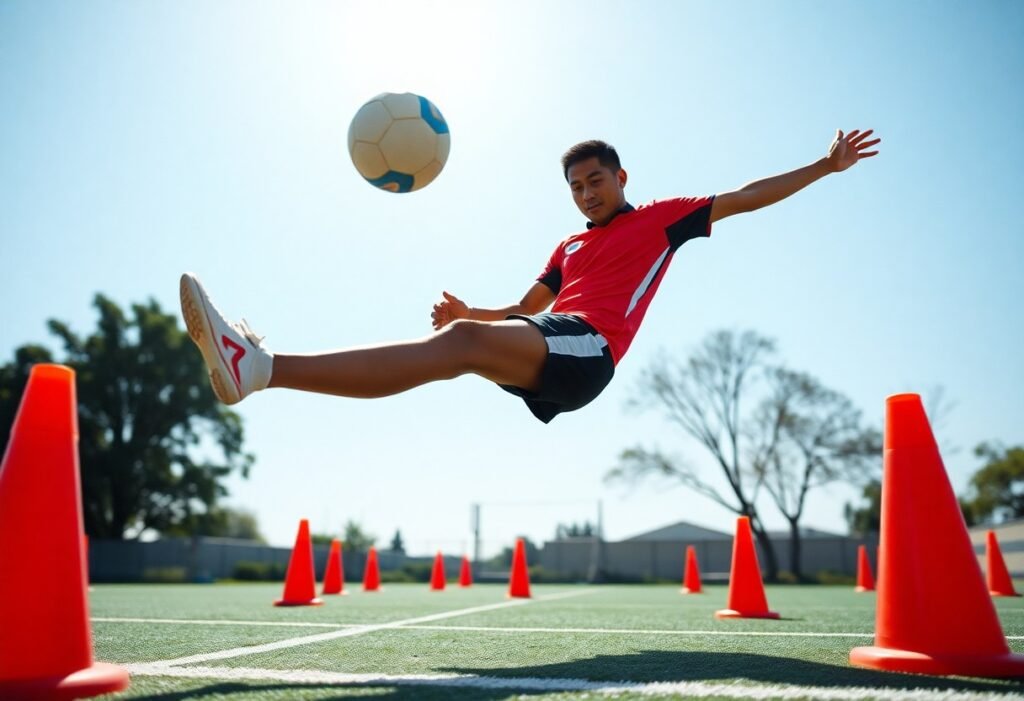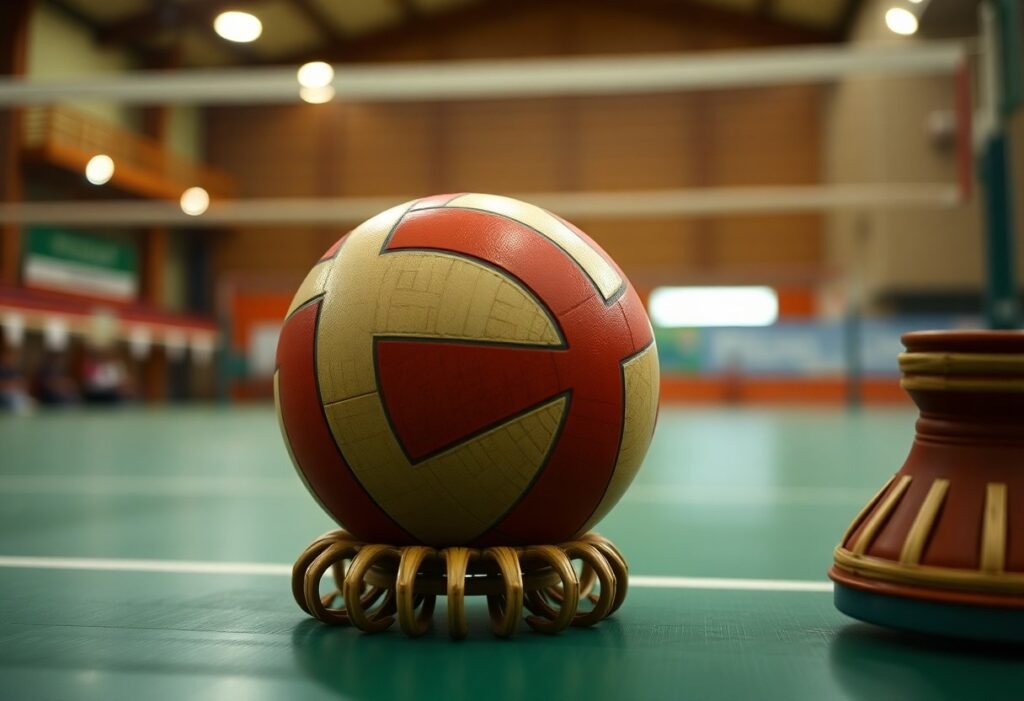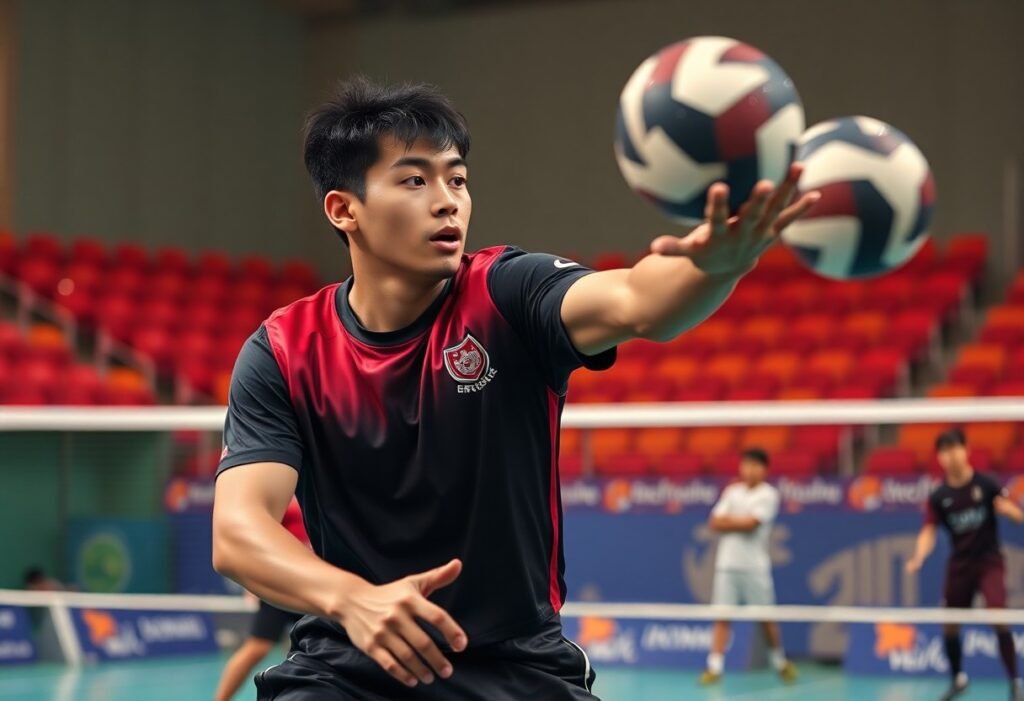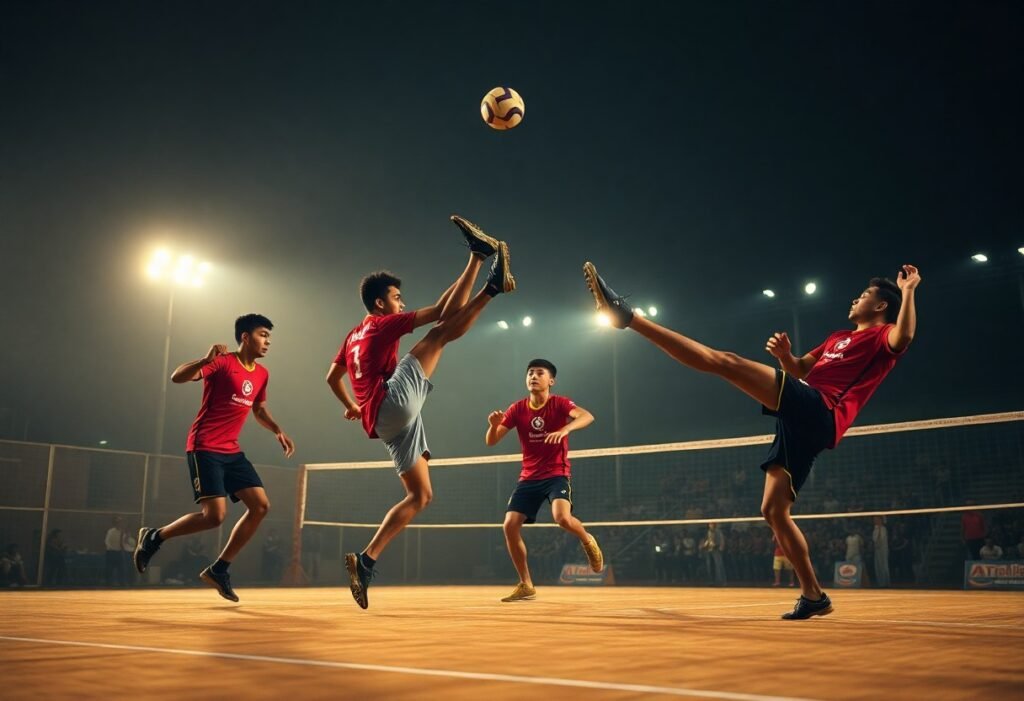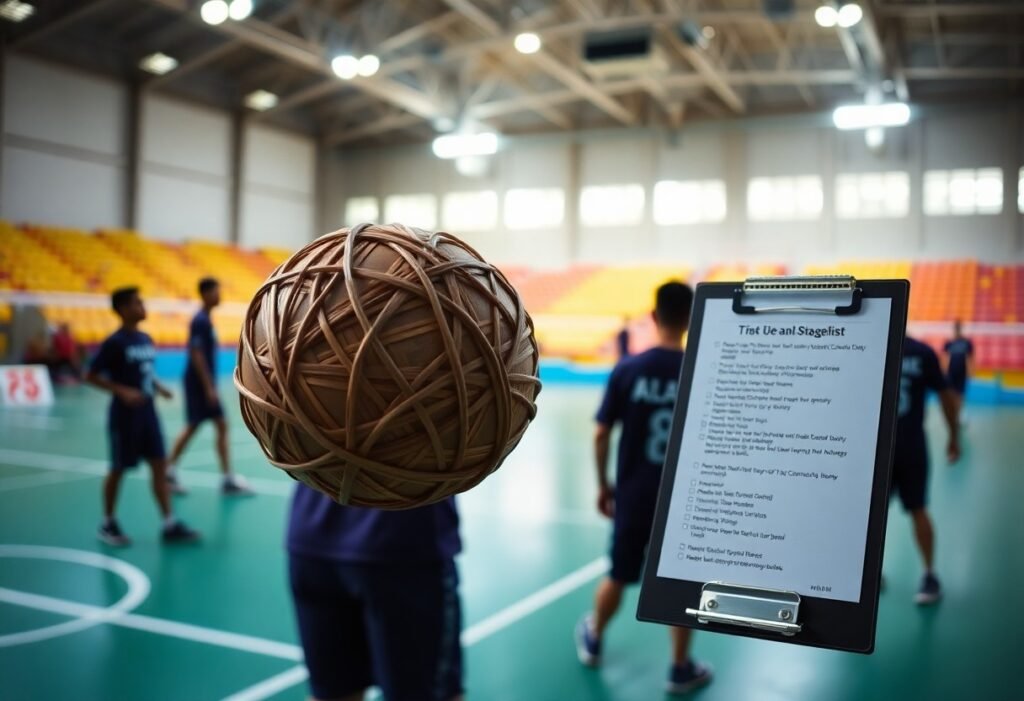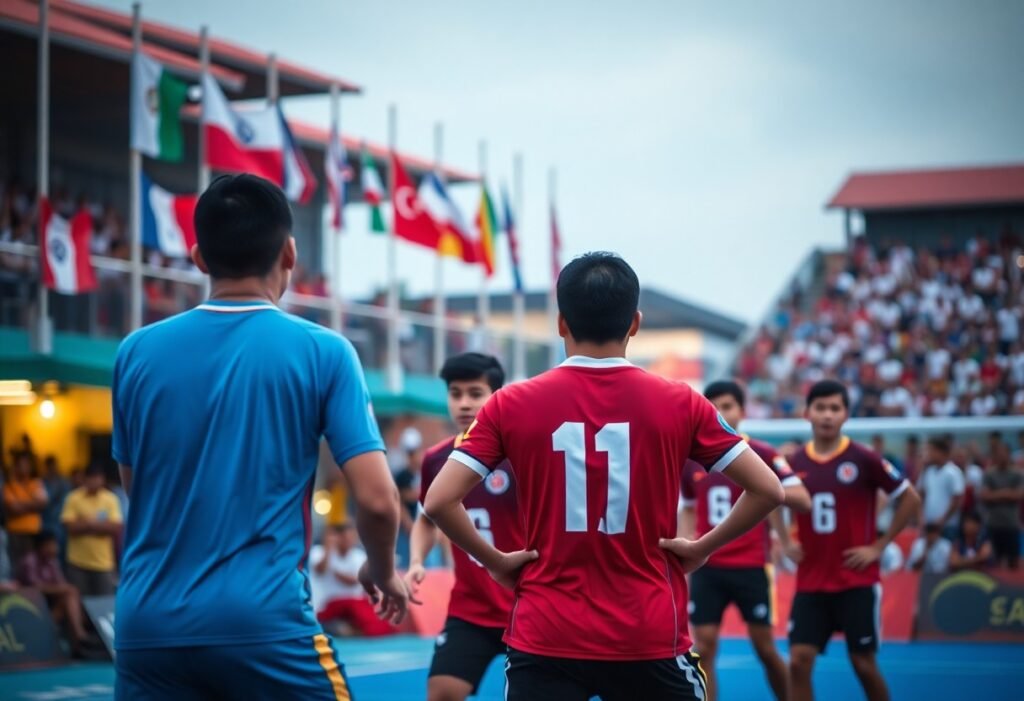Coordination is imperative in Sepak Takraw, where each move relies on your ability to synchronize your body with the demands of the game. As you engage in this exhilarating sport, you must maintain strong balance to execute plays effectively while avoiding injuries. Mastering both skills not only enhances your performance but also boosts your confidence on the court. Knowing how to control your body movements allows you to deliver impressive kicks, emphasizing the importance of these elements in achieving success and enjoyment during your matches.
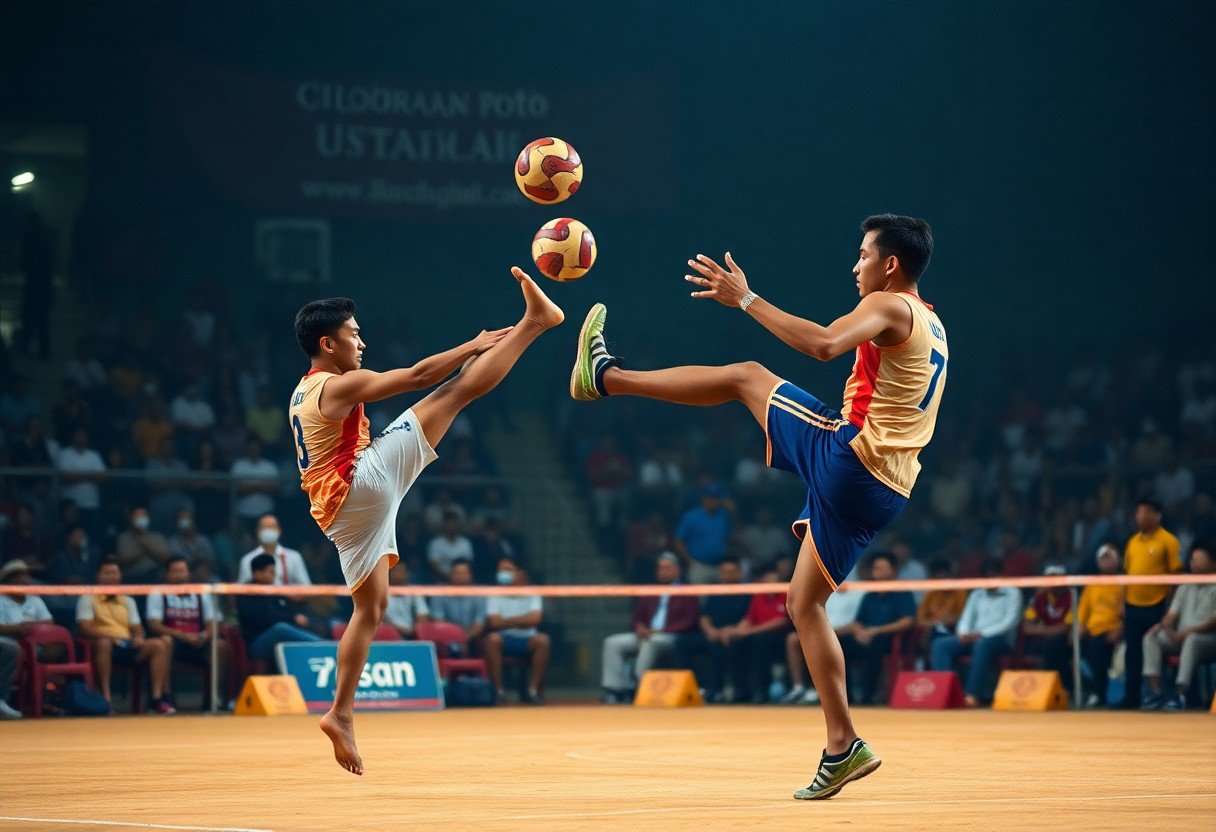
Key Takeaways:
- Coordination is vital for players to execute complex techniques, such as spikes and serves, which require precise timing and body movement.
- Balance contributes significantly to a player’s stability and agility, enabling them to maneuver effectively during rallies and maintain control while performing aerial plays.
- Developing both coordination and balance enhances overall athletic performance in sepak takraw, allowing players to respond quickly to opponents and adapt their strategies during matches.
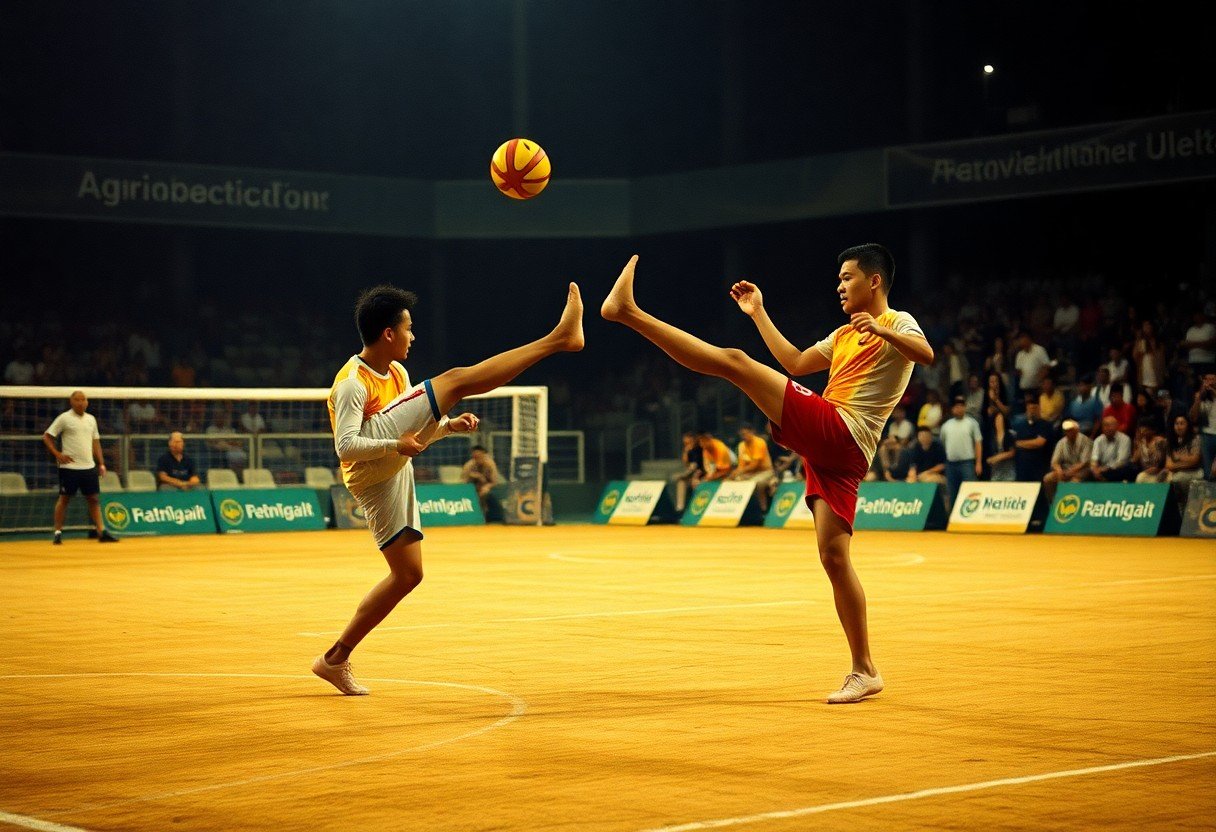
The Fundamentals of Sepak Takraw
While many sports have evolved over the years, Sepak Takraw boasts a rich history deeply rooted in the cultures of Southeast Asia.
History and Origins
After its inception in the 15th century, Sepak Takraw originated from Malaya, influenced by existing traditional games. It was originally played as a pass-time using a rattan ball, which allowed for dynamic and acrobatic play that resonated with local customs and community gatherings.
Basic Rules and Gameplay Mechanics
Gameplay in Sepak Takraw involves two teams of either two players (singles) or three players (doubles) competing to score points by sending the ball over a net using any part of the body except the arms and hands. Each team has a maximum of three touches to return the ball, and matches are played to 21 or 25 points, depending on the format.
Consequently, understanding the rules is vital for enhancing your gameplay. Point scoring occurs when the opposing team fails to return the ball, or when the ball lands inside the designated court area. The fast-paced nature of the game requires effective coordination and exceptional balance, ensuring that your movements are both agile and resilient while playing.
Equipment and Court Specifications
On the surface, Sepak Takraw may seem straightforward, but the equipment and court specifications play a significant role in the game. A regulation Sepak Takraw ball, typically made from rattan or synthetic material, is lightweight yet durable, while courts are rectangular, measuring 13.4 meters long and 6.1 meters wide for doubles.
But understanding the specifics can greatly influence your performance. The net height differs for men and women, with men’s nets set at about 1.52 meters high. Ensuring all equipment meets the required standards ensures a fair play environment while enhancing overall safety during intense matches.
Understanding Coordination
Even in the fast-paced game of Sepak Takraw, the concept of coordination plays a fundamental role in achieving success on the court.
Definition of Coordination in Sports
Along with agility and strength, coordination in sports refers to the ability to synchronize movements of different parts of the body seamlessly. It’s the harmony between your limbs that allows you to execute techniques effectively and adapt to changing situations within the game.
The Importance of Hand-Eye and Foot-Eye Coordination
Coordination is vital in Sepak Takraw as it involves precise control over your body movements. Hand-eye and foot-eye coordination are particularly important as they enable you to accurately contact the ball while positioning your body effectively to execute plays.
In fact, the ability to effectively integrate your visual input with your physical movements can greatly enhance your overall performance. When your hand-eye coordination is sharp, you become adept at targeting the ball accurately, while strong foot-eye coordination facilitates better ball control and placement during gameplay.
Developing Coordination Skills for Sepak Takraw
For improving your coordination skills in Sepak Takraw, it’s vital to engage in specific drills that focus on enhancing your motor control and reaction time. These exercises can help you sync your visual skills with your physical responses, leading to more confident play.
Understanding different training methods, such as balance exercises, footwork drills, and reaction training, can significantly elevate your coordination. Consider incorporating visual tracking drills to enhance your hand-eye coordination, thereby ensuring that you can efficiently execute headers, kicks, and passes during matches.
The Role of Balance
Unlike many sports, balancing is a vital element in Sepak Takraw, affecting not only how you perform individual moves but how you navigate the game as a whole. The ability to maintain balance enables you to execute tricky maneuvers, remain agile, and project power during your plays. Research has shown the effect of eye-foot coordination, flexibility of the limbs, body balance, and self-confidence on the accuracy of Sepak Takraw.
The Significance of Balance in Athletic Performance
Significance in sports cannot be overstated; balance influences your stability, agility, and overall performance. In Sepak Takraw, it helps you change directions quickly while maintaining control, ultimately affecting your scoring ability. When you foster a strong balance, you will see noticeable improvements in your athletic capabilities.
Types of Balance: Static vs. Dynamic
Static balance refers to your ability to maintain stability when stationary, whereas dynamic balance involves maintaining control while moving. Both types are important for successful play in Sepak Takraw; however, dynamic balance is often put to the test during fast-paced matches.
| Static Balance | Required during serves and playing from a stationary position. |
| Dynamic Balance | Necessary when executing jumps and quick movements to spike the ball. |
| Importance | Strong balance minimizes the risk of injury and improves performance. |
| Training | Practicing movements that involve both types of balance is beneficial. |
| Application | Every athlete should aim to develop both static and dynamic balance. |
Another important aspect is the fine-tuning of balance through deliberate practice. You must incorporate drills and exercises designed to enhance both your static and dynamic balance, which will not only improve your performance but also build confidence during matches. Here are some ways to work on your balance:
- Yoga can enhance your static balance.
- Plyometrics boost your dynamic balance skills.
- Stability exercises improve core strength and balance.
- Footwork drills help with coordination while maintaining balance.
- Assume that practice leads to mastery in both types of balance.
Balancing Techniques Specific to Sepak Takraw
Between serves and spikes, specific balancing techniques can enhance your game. Understanding your center of gravity is vital; you should learn how to position yourself effectively to maintain stability and balance throughout various actions. You may also find that engaging your core muscles significantly aids in your balance while making quick movements.
Even outside of practice, maintaining balance on an uneven surface or in a position of uncertainty can help you increase awareness and control. Incorporating drills such as one-legged stands or dynamic movements in your training routine will promote stronger balance and agility. Make sure to prioritize posture, engagement of core muscles, and foot placement for safety and performance.
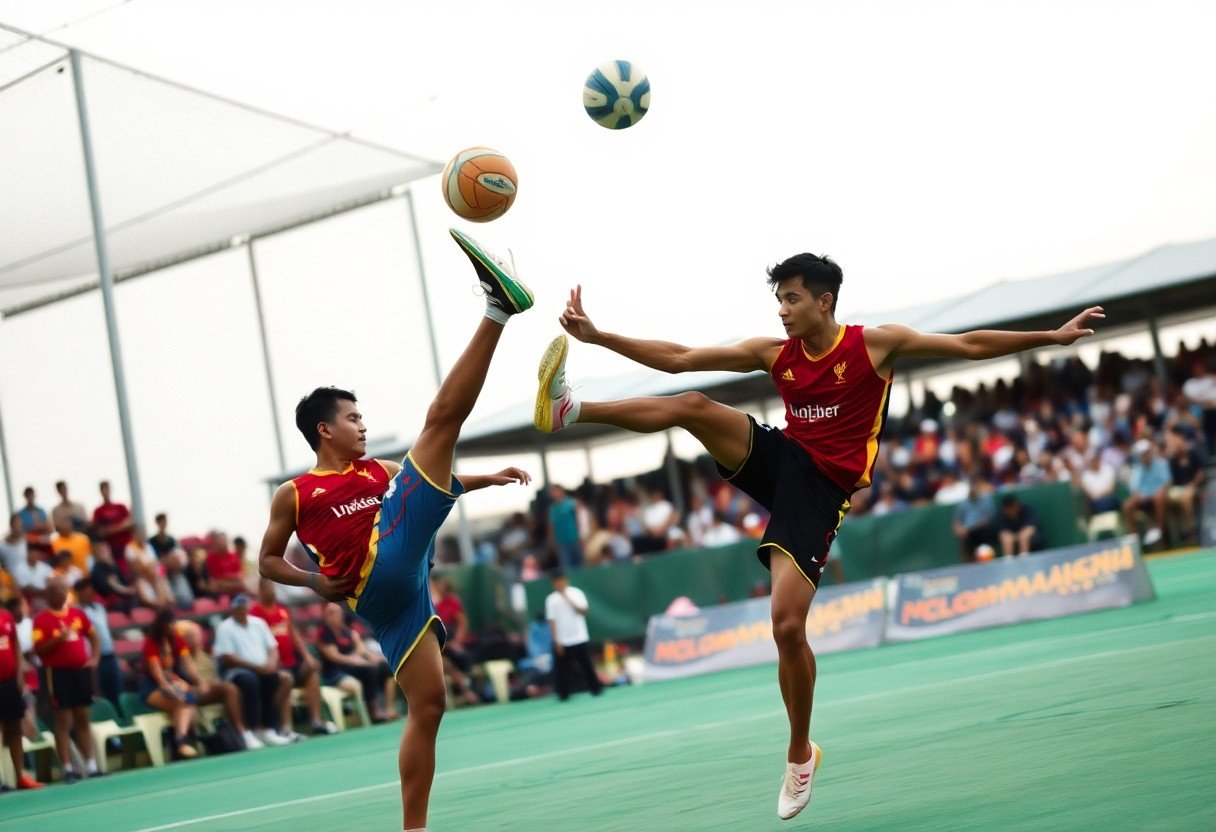
Training for Coordination and Balance
Once again, your journey to mastering Sepak Takraw requires a strong focus on coordination and balance. To elevate your game, dedicated training exercises targeting these skills can significantly enhance your performance on the court.
Drills to Enhance Coordination in Players
Against the backdrop of fast-paced gameplay, implementing coordination drills is vital. Simple exercises, such as footwork drills and reaction drills, can help sharpen your timing and agility. Incorporating agility ladders or cones can assist in building your foot speed and overall coordination, ensuring you can navigate the court effectively.
Exercises to Improve Balance for Optimal Performance
Improve your stability through targeted exercises like single-leg stands and balance board workouts. These exercises not only enhance your core strength but also train your body to control movements under pressure, which is imperative during matches.
Understanding the importance of balance in Sepak Takraw goes beyond mere stability; it involves developing your body’s ability to react and adjust quickly. Incorporate dynamic movements, such as lunges and side-to-side shuffles, into your training routine. Engaging your core while executing these exercises will further reinforce your balance, allowing you to maintain control during intense play.
Combining Coordination and Balance Training
Between coordination and balance training, a comprehensive approach is necessary for optimum performance. Pair exercises targeting both areas to create a well-rounded regimen. For instance, practicing footwork drills while balancing on one leg can challenge you doubly, enhancing your overall athleticism.
To maximize training effectiveness, focus on integrating coordination and balance exercises within your practice sessions. By alternating drills that promote hand-eye coordination, like ball tossing, with balance-enhancing workouts, you’ll build a strong foundation. This holistic approach will prepare you for the unpredictable nature of Sepak Takraw, ensuring you remain agile and steady throughout your games.
The Impact of Coordination and Balance on Performance
After understanding the basics of Sepak Takraw, it becomes evident how necessary coordination and balance are to your overall performance on the court. These two elements directly affect your ability to move fluidly, respond quickly, and execute your skills with precision.
Analyzing Player Movement and Agility
For effective gameplay, your movement and agility must be finely tuned. Observing how players navigate the court reveals the intricate timing and spatial awareness necessary to execute impressive maneuvers. Each step and jump should feel effortless, showcasing the synergy between your body and mind.
The Influence of Coordination on Team Dynamics
About teamwork, your ability to coordinate with fellow players can deeply affect the game. Seamless interaction and understanding among teammates create opportunities for effective plays and enhance overall performance.
Also, when you maintain strong coordination, it allows for real-time adjustments during the match. This adaptability not only improves your individual skills but also strengthens your camaraderie and trust with your teammates, helping achieve a unified approach to the match. Strong coordination ensures you’re always connected, working in harmony to outmaneuver opponents.
Balancing in Offensive and Defensive Strategies
Between the offensive and defensive strategies, finding the right balance is vital for success in Sepak Takraw. You need to be adept at transitioning between attacking moves and defensive stances quickly.
Hence, you must enhance your balancing skills to shift effectively between offense and defense. This dynamic balancing allows you to execute powerful attacks while being prepared to defend against countermoves. A well-balanced player can maintain their center of gravity, which not only boosts your offensive capabilities but also fortifies your defensive strategies, making you a formidable opponent on the court.
Common Mistakes and Injuries
Frequent Errors Related to Coordination and Balance
Keep an eye on your coordination and balance while playing Sepak Takraw. About many players tend to overreach or underestimate their foot placement during serves and spikes, leading to ineffective plays. Additionally, poor timing can cause misjudgments in the direction and speed of the ball, which may lead to mistakes that compromise both your performance and safety. Practicing precise movements and recognizing your limits can help you avoid these frequent errors.
Injury Risks: Preventative Measures and Awareness
Across the vibrant game of Sepak Takraw, the risks of injuries related to coordination and balance are significant. Awareness of your body’s limits and proper techniques can greatly reduce the likelihood of sprains, strains, and falls. It’s necessary to maintain a balanced stance and engage in warm-up exercises that promote flexibility and strength. Focus on stabilization drills that target your core muscles to enhance your overall balance during gameplay.
Recovery Techniques for Coordination and Balance Injuries
Against possible injuries, employing effective recovery techniques is vital for returning to the sport. Your recovery routine should include stretching, strengthening, and stabilization exercises tailored to your specific injury needs. It’s also advisable to engage in low-impact activities like swimming or cycling to maintain fitness while reducing strain on your injured area.
At the same time, incorporating professional rehabilitation guidance can enhance your recovery process. Physical therapists often recommend customized exercises aimed at restoring your coordination and balance as well as ensuring proper healing. Securing your safety during recovery is necessary, so don’t rush back into the game without fully addressing any injuries. Making thoughtful decisions about your health will ensure a safe and effective return to Sepak Takraw.
Summing up
Considering all points, you can see that coordination and balance play pivotal roles in achieving success in Sepak Takraw. These skills enhance your ability to perform complex maneuvers and maintain control during dynamic gameplay. As you develop your coordination, you will notice improvements not only in your gameplay performance but also in your agility and physical awareness. By focusing on these elements through practice, you can elevate your skills in Sepak Takraw and contribute more effectively to your team’s strategy on the court.
FAQ
Q: Why is coordination important in Sepak Takraw?
A: Coordination is necessary in Sepak Takraw as it enables players to effectively manage their body movements while executing complex kicks and maneuvers. Since the game involves striking a rattan ball with various parts of the body—primarily the feet, head, knees, and chest—players must synchronize their movements to maintain control, accuracy, and timing. Good coordination allows for better reaction times and the ability to anticipate moves, which enhances overall performance during fast-paced matches.
Q: How does balance contribute to performance in Sepak Takraw?
A: Balance plays a significant role in Sepak Takraw, as players often perform acrobatic kicks that require them to stay stable on one foot while striking the ball. Proper balance helps players to maintain their center of gravity, which is vital when executing high jumps and intricate shots. A strong balance system allows athletes to recover quickly from challenging positions, reducing the likelihood of falls and improving overall agility on the court.
Q: What are the common drills to improve coordination and balance for Sepak Takraw players?
A: Players can engage in various drills to enhance both coordination and balance. Some effective exercises include:
1. Single-leg stands: Holding a position on one leg while maintaining control of body posture helps strengthen stabilizing muscles.
2. Footwork drills: Ladder drills and cone exercises improve agility and coordination by requiring quick foot movements in different patterns.
3. Ball control exercises: Juggling or controlling the ball with various parts of the body helps to develop coordination between the feet, hands, and eyes.
4. Plyometric jumps: Jumping exercises focus on explosiveness while reinforcing balance during landings.
These drills can significantly prepare players for the dynamic movements required in matches.
Q: In what ways does practicing coordination and balance affect game strategy in Sepak Takraw?
A: Practicing coordination and balance is integral to developing effective game strategies in Sepak Takraw. As players exhibit improved skills, they can incorporate more advanced techniques into their play, such as executing deceptive shots and performing unexpected aerial maneuvers. Enhanced coordination allows players to position themselves better relative to their opponents and the ball, therefore changing the pace and flow of the game. This strategic advantage can lead to creating opportunities for scoring and defending successfully against opponents.
Q: Are there specific physical attributes that benefit coordination and balance in Sepak Takraw?
A: Yes, certain physical attributes contribute to better coordination and balance in Sepak Takraw. Key attributes include flexibility, which aids in executing a wide range of kicks and movements, and core strength, which helps stabilize the body during dynamic actions. Additionally, strong leg muscles enhance power and balance when jumping or landing. Overall fitness levels, including endurance and agility, also play a vital role in maintaining peak athletic performance throughout matches. Players often focus on these physical aspects in their training regimens to improve their agility and responsiveness on the court.
